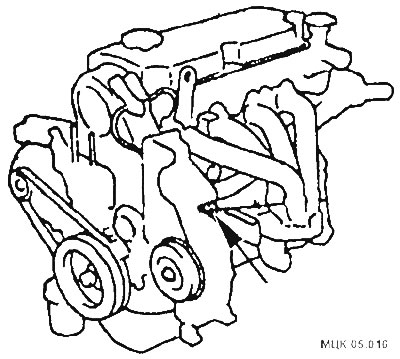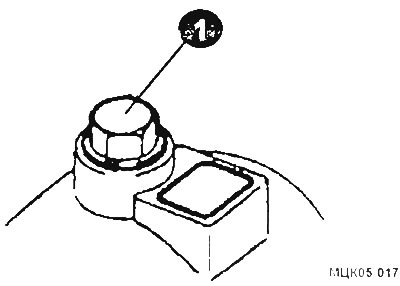Coolant drain
The vehicle must be on a level surface. Drain the coolant as follows:
If the engine is cold, unscrew the cap of the radiator and expansion tank. If the engine is hot, loosen the cap slightly, wrapping it with a rag to avoid getting burned by the steam, and wait until the pressure in the system drops. If you unscrew the cap with a very hot engine quickly, the pressure drop will cause the liquid to boil. After the pressure drops, unscrew the cap.
If antifreeze is in the radiator, drain it into a clean container for reuse.
Open the heater tap.
Open the drain cocks on the bottom of the radiator tank and on the cylinder block (if there).
When the liquid stops flowing, clean the drain holes with a short piece of wire - they may be clogged with rust or scale particles.
ATTENTION: If you open the drain cock only on the lower radiator pipe, then the liquid will not flow out of the cylinder block.
Over time, the radiator becomes clogged with rust and scale. To flush the system, unscrew and remove the upper and lower hoses. Insert a hose into the upper neck of the radiator and flush it with water for 10-15 minutes.
If you suspect that the system is clogged, fill it with a solution of one of the special cleaners that are commercially available. Check that this product is compatible with the aluminum cylinder head.
Filling the cooling system
When filling the system, use distilled water mixed in the correct proportion with antifreeze. The use of distilled water or rain water significantly reduces the rate of deposit formation.
The following order of filling the system is recommended:
Unscrew the bleeder plug (arrow) or disconnect the hose from the intake manifold heater and open the heater cock.

Pour coolant into the radiator until coolant comes out of the plug hole or disconnected hose. screw the stopper (1).

Put the hose on the fitting of the heating unit and secure it with a clamp, without stopping pouring liquid into the radiator, so that an air lock does not form.
Warm up the engine. Warming up the engine is necessary in order to remove air bubbles from the system. If the system is filled to the correct level at operating temperature, then topping up will be necessary when cooling down, since when cooling down, the volume of liquid will decrease by about 250 cm3. Check the fluid level again when the engine is hot. Add liquid to the expansion tank up to the mark «FULL».
